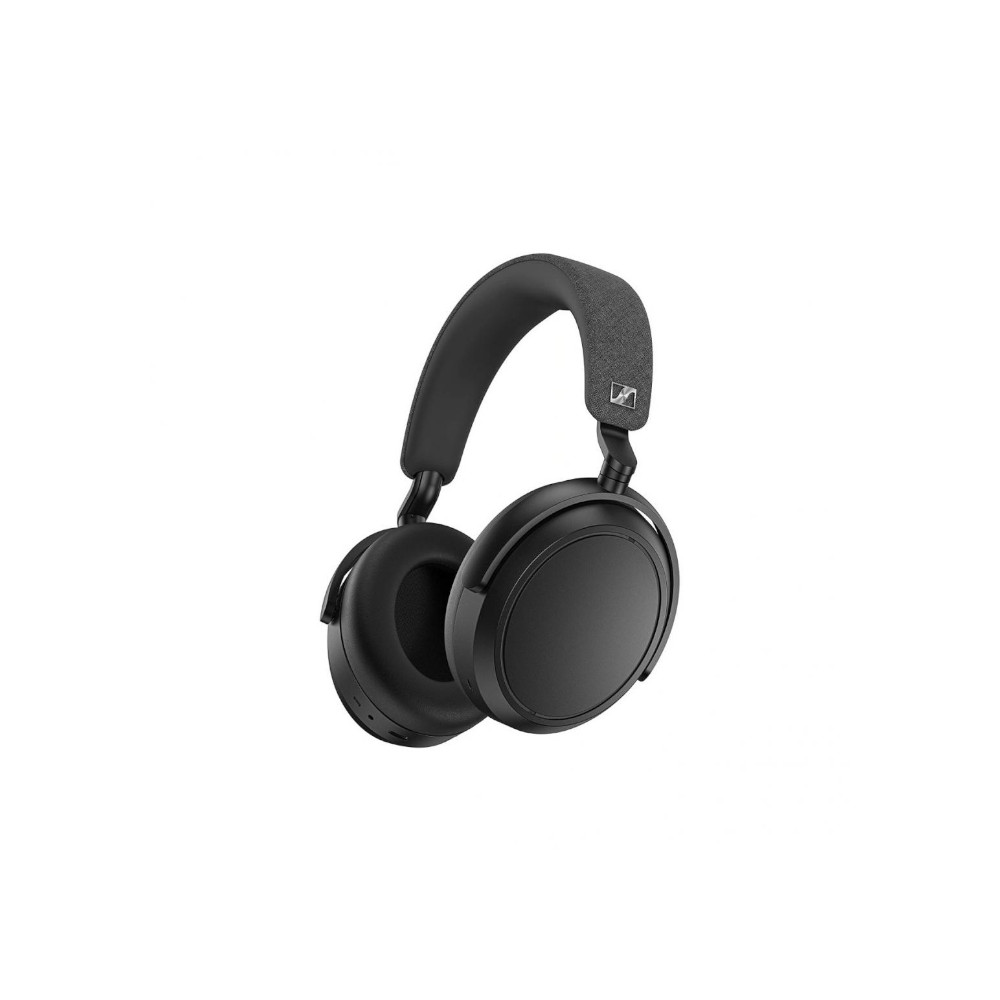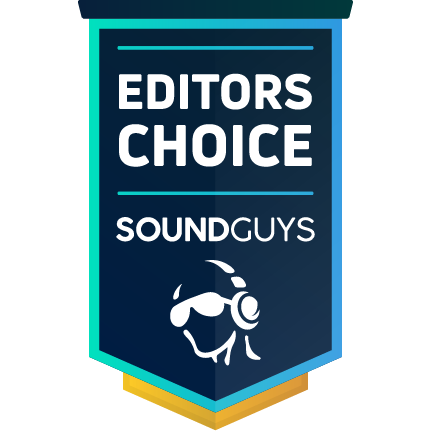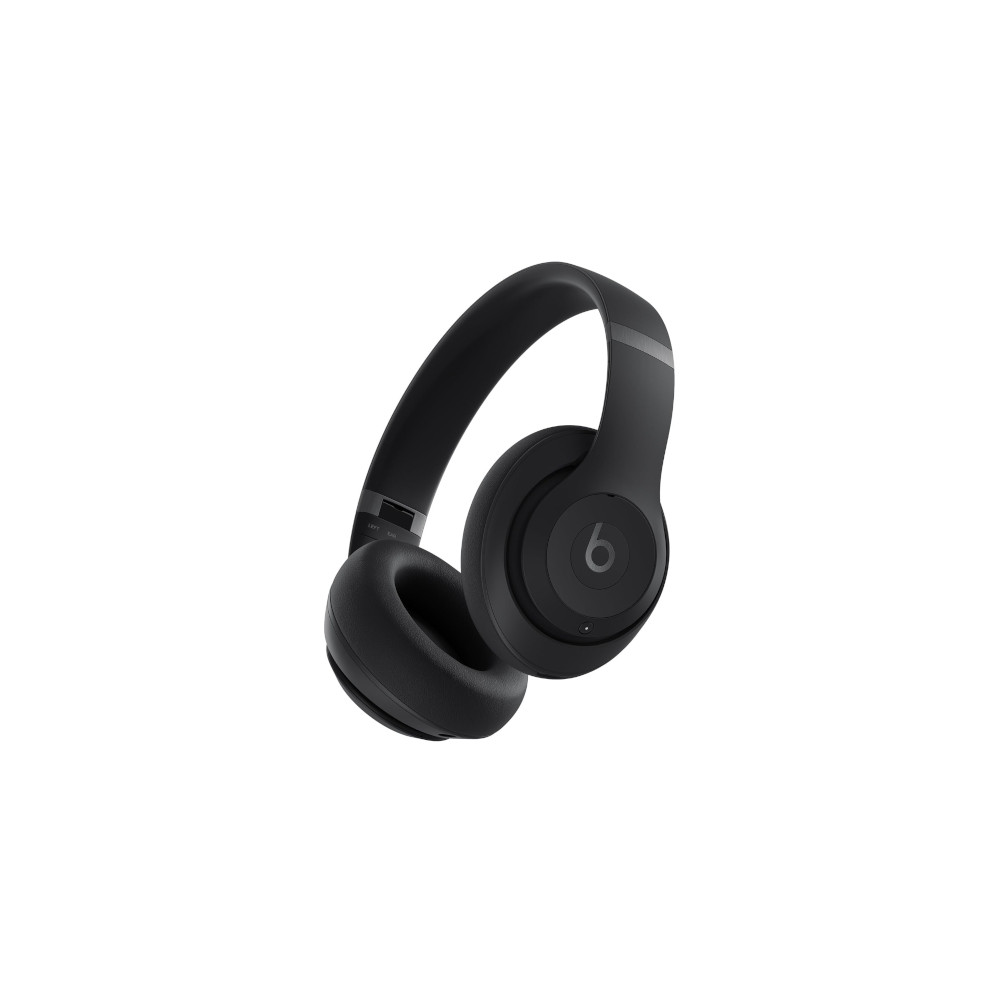All products featured are independently chosen by us. However, SoundGuys may receive a commission on orders placed through its retail links. See our ethics statement.
Best USB-C headphones
Published onDecember 19, 2024









Take SoundGuys’ quiz to find your best fit
After most smartphone companies followed Apple in removing their headphone jack back in 2018, the headphone market found itself in abrupt chaos. Users were accustomed to always being able to use wired headphones but now were forced to grab a pair of wireless headphones. An alternative presented itself in USB-C headphones, but after limited adoption, compatibility issues, and poor available options, the connector fell out of favor on headphones. But as the years went on, it became apparent that wireless audio just wasn’t cutting it for some folks. USB-C headphones have quietly made a comeback in the form of headphones that can do it all rather than offering only one connection method.
After five years in the woods, USB-C headphones are back. But this time, they’re ready to compete.
What's new?
- This post was updated on December 19, 2024, to replace the Bowers and Wilkins Px7 Se with the Bowers and Wilkins Px8.
- Check out our list of the best USB-C headphone adapters to make any headset compatible.
Why are the Shure AONIC 50 (Gen 2) the best USB-C headphones?

It was hard to imagine how the Shure AONIC 50 could be improved, but the Gen 2 version has managed just that — without jacking up the price. Now listed at$349 at Amazon, they offer an even better bang for your buck.
Dethroning their predecessor, the Shure AONIC 50 (Gen 2) easily claims the title of the best USB-C headphones. Like the first generation, this model maintains their position of being primarily Bluetooth headphones with a handy USB-C passthrough feature. The flexibility remains—you can swap from wireless to wired listening without skipping a beat.
However, Gen 2 takes it up a notch with improved comfort, durability, and, most importantly, sound quality. Including a wider array of Bluetooth codecs and a more intuitive PLAY app for customization makes these headphones versatile enough for the audiophile and casual listener alike. These aren’t just excellent noise canceling headphones; they’re a holistic audio solution that should be at the top of your list for all-around performance.


Loading chart ...
If you’re choosing between the Gen 1 and Gen 2 versions of the Shure AONIC 50, here’s the quick lowdown. The Gen 2 offers improved noise cancelation, battery life, and a more responsive touch control system. While both models deliver premium audio quality, the Gen 2 tweaks take them a step beyond their predecessor.
As for the older model, they have seen a price drop since the release of Gen 2. If budget is a concern, the original Shure AONIC 50 still delivers a top-tier audio experience, just without some of the newer enhancements.


The Focal Bathys are our premium pick for the best sound quality

Though they’re easily the most expensive option on this list, the Focal Bathys are the best-sounding headphones when it comes to USB-C connectivity. They can connect to just about anything that can send data over USB-C as a result.
The Focal Bathys are loaded to the gills with features built around sound quality, but there are a couple of downsides outside of the price. For example, the headphones are quite heavy at 350g, and the noise canceling is merely “decent.” Additionally, you must have the headphones charged in order to use them. Still, if you want the best sound quality out of your USB-C headphones, this is it.


Loading chart ...
The Sennheiser MOMENTUM 4 Wireless is a less-expensive set of ANC headphones

If you don’t want to spend almost $800 on headphones but still want what the Focal Bathys have to offer, the Sennheiser MOMENTUM 4 Wireless are really close replacements for just under half the price. Though they don’t quite sound as good as the Focal Bathys, they’re very much worth the money. Additionally, they’re lighter, have a much better battery life, and have about the same ANC performance.
Though $380 is still a really steep price for anyone looking for casual headphones, we strongly encourage you to take the leap if you’re looking for a tool that serves you for multiple years. While it may sting up front, sometimes expensive headphones are worth it—and this is one of those times.


Loading chart ...
The chart below shows how the sound of the Sennheiser Momentum 4 was assessed by the Multi-Dimensional Audio Quality Score (MDAQS) algorithm from HEAD Acoustics.

The Bowers & Wilkins Px8 sounds great and look stylish

The Bowers & Wilkins Px8 is one of those luxury products that catch eyes, but will most often be admired from afar. Key features include excellent sound tuning, effective ANC, a good transparency mode, and a stylish design. However, they do lack water resistance. The Px8 excels in sound quality thanks to a 24-bit DSP and an actually-decent companion app to handle advanced features. The sound is bass-heavy with some odd choices in the highs, suitable for various music genres. We strongly encourage you to play with the equalizer, as the default sound is a bit bass-heavy.
Connectivity is robust with Bluetooth 5.2, supporting codecs like SBC, AAC, and aptX adaptive. The headphones can connect to analog and digital sources via supplied cables, including a 3.5mm TRS jack to USB cable. They offer 40 hours and 39 minutes of battery in our tests.
Though it’s quite heavy on your head (and wallet), the Bowers & Wilkins Px8 stands out for its sound quality, build, and practical features, making it a strong contender in the over-ear USB Bluetooth headphone market with ANC, especially for those who value audio performance and design over additional digital features.

Loading chart ...
The JLab JBuds Lux ANC is one of the best budget USB-C headphones

The JLab JBuds Lux ANC offers excellent value for under $100. They provide effective active noise cancelation that does a good job reducing lower frequency noise like on transit. The sound quality is characterized as pretty decent, with an appealing bass emphasis and good stereo imaging that helps music cut through ambient noise.
Other key strengths are the substantial padding for all-day comfort, USB-C audio connectivity, which is rare at this price point, and incredible 44-hour battery life. The headphones fold up compactly for travel as well. Overall, the JLab JBuds Lux ANC focuses on nailing the fundamentals like noise cancelation, sound quality, comfort, and battery life extremely well for the budget price, making them an excellent budget USB-C headphone option despite lacking some premium features. Their value proposition is very compelling.


Loading chart ...
The chart below shows how the sound of the JLab JBuds Lux ANC was assessed by the Multi-Dimensional Audio Quality Score (MDAQS) algorithm from HEAD acoustics.

The Sennheiser Accentum Plus is good value

If you are looking for more affordable USB-C headphones, the Sennheiser ACCENTUM Plus is a solid option with active noise canceling (ANC) capabilities. Priced at $229.95, these headphones offer straightforward features, including touch controls, impressive battery life extending up to 53 hours with ANC on, and decent sound quality that, while not groundbreaking, delivers a satisfactory listening experience. Additionally, the inclusion of wired listening options via USB-C and 2.5mm TRS socket enhances its versatility, making it a strong candidate for those prioritizing connectivity and battery efficiency.
However, the headphones aren’t without their drawbacks. The lack of an IP rating might deter users looking for water or dust resistance, and their inability to fold up could be seen as a limitation for portability. Despite these shortcomings, the Sennheiser ACCENTUM Plus stands out for its comfort, with features such as light plastic construction to prevent hair snagging and soft ear pads that accommodate glasses wearers. While it may not compete with top-tier models in terms of ANC performance or sound quality, its strengths lie in its user-friendly design and the balance it strikes between cost and performance.


The chart below shows how the sound of the Sennheiser Accentum Plus was assessed by the Multi-Dimensional Audio Quality Score (MDAQS) algorithm from HEAD acoustics.

Check out the Audeze Maxwell for gaming

Gaming headsets are a logical choice for USB-C audio, given they’re generally chained to a desk or console. Gaming headsets typically have pretty extreme demands set upon them, including zero latency, extreme battery life, high-quality microphones, and comfort for long gaming sessions. The Audeze Maxwell checks all these boxes but also has USB-C audio. This provides a performance edge over other closed-back gaming headsets.
Of course, the Audeze Maxwell doesn’t only connect over USB-C: it can hook up to your PC or console via Bluetooth, a traditional TRS plug, or its included RF dongle. Really, the only reason you’d ever find yourself being unable to connect this headset is if you picked the wrong version for the console you’re using (PS5 vs. Xbox).
The Beats Studio Pro is where ANC meets high-fidelity USB DAC

The Beats Studio Pro enters the USB-C headphone arena with its internal USB DAC feature, allowing users to enjoy wired listening over USB-C — a capability not found in Apple’s own AirPods Max.
The headphones come equipped with active noise canceling (ANC) capabilities, which reduce ambient noise, making commutes and travel more enjoyable. Features like head-tracked Spatial Audio and Transparency Mode are added bonuses for Apple enthusiasts.
However, potential buyers should be aware of the design considerations. The smaller ear cups might not be ideal for everyone, especially those with larger heads or glasses. But for those who can achieve a snug fit, the Beats Studio Pro offers a commendable audio experience with the added benefit of USB-C connectivity.

Google’s USB-C to 3.5mm Audio Cable turns any headset into a USB-C headset

There’s not much to say about Google’s USB-C to 3.5mm Headphone Adapter ($7.99 on Amazon) other than it connects to any 3.5mm port on a pair of headphones and terminates in a USB-C connector. This allows you to take your favorite pair of headphones and plug it directly into your phone’s USB-C input.
The only a couple inches long and works on all USB-C ports, including the one found on Apple’s iPad. It’s less than $10, but it does everything that you need it to. You don’t need to overthink anything here; the dongles are near-perfect for low-power devices such as headphones, and there just isn’t a huge reason to shell out for anything more expensive.
The best USB-C headphones: Notable mentions
- Shure RMCE-USB Earphone Communication Cable with Integrated DAC/Amp: If you’ve already invested money into something in Shure’s line-up, then it’s also worth checking out their (RMCE-USB) terminating in MMCX connectors that can turn its entire lineup of in-ear monitors into USB-C powerhouses that will undoubtedly mop the floor with the existing pack performance-wise. Coming in at $99, this can make the following IEMs USB-C enabled:
- If you buy an Android phone, sometimes there are USB-C dongles in the case
If it seems like this is a thin list, that’s because it is.
Hold up! Something’s different:
Some of our picks’ frequency response and isolation charts were measured with our old testing system. We have since purchased a Bruel & Kjaer 5128 test fixture (and the appropriate support equipment) to update our testing and data collection. It will take a while to update our backlog of old test results, but we will update this article (and many others!) once we’re able with improved sound quality measurements and isolation performance plots. These will be made obvious with our new chart aesthetic (black background instead of white).
Thank you for bearing with us, and we hope to see you again once we’ve sorted everything out.
What about the Apple EarPods?
You may be tempted to point out that Apple released a cheap pair of USB-C earbuds not too long ago, but both those earbuds and Google’s USB-C earbuds suffer serious design setbacks that will have you looking for new ones in short order.

By not sealing your ear, the earbuds won’t be able to perform consistently, nor will they be able to block outside noise much at all. Because of this, you’ll be listening more loudly than you should, and it will sound worse. There’s a reason that none of the similar models online have stuck around very long.
Do not buy anything else
It’s not that all the other USB-C headphones are bad, but buying something for the sake of buying it is unwise when better investments exist. Much of the remaining models of USB-C headphones are actually just cheap Amazon dreck meant only to soak up impulse buys.
I have yet to find a set of USB-C headphones that aren't frustrating as hell in some way or another.
Though we’re past the part of the product lifespan where you have to worry about walled gardens and incompatibility between phones and headphones, Apple’s move to USB-C still hasn’t solved the interoperability problem. For example, the EarPods will not work on an ASUS Zenfone 10, even though both the newest iPhones and the aforementioned both have a USB-C port. The more things change, the more they stay the same, it seems.
How we select candidates for the best USB-C headphones
The absolute bare minimum criteria we use for our best lists aren’t very discerning, but most models fail this easy test:
- The products have to be reasonably easy to buy for your average shopper
- The products have to work on the most popular devices
- The products cannot be discontinued or cause physical harm
I’ll admit selecting candidates was the hardest part. Not only are people simply not searching for this term yet, but the number of products available when I started this article was extremely scarce. They were so scarce that most of my results were initially just leaked products that weren’t even released yet. We did find a handful of products out there—some by reputable companies—but the line-up is still too thin for our liking.
How we test the best USB-C headphones
After buying whatever we could find, getting pre-orders in, and begging for help, we were able to build a corpus of candidates to assess. Considering the compatibility issues with USB-C at the moment, the first bar to clear was “the product has to work on modern, popular smartphones.” We thought that’d be an easy one to clear, but we were wrong. Despite my gut feeling that I should skip the low-end in-ears on Amazon, I forged ahead anyway… and wasn’t surprised when I got more enjoyment out of watching paint dry than most of the bunch. Some models were actually painful to use.

From there, we assessed sound quality, features, and comfort in that order. Obviously, that’s not a scientific test, but we did have more than one person testing these things. Over the last few years, we’ve been able to test hundreds of products — but only a few have the USB-C audio connectivity people hoped for. It wasn’t until 2023 that ANC headphones were on the market in any appreciable capacity for this category, so you can see how slow-moving this is.
Why you should trust SoundGuys
We perform objective tests to measure the sound quality, noise isolation and battery life of the headphones and earbuds that we get our hands on. We want each of you to enjoy the earbuds that you choose, and none of our writers may benefit from directing readers to one product or another.
Frequently Asked Questions
USB-C headphones offer a wired alternative in a market that’s seen the decline of the traditional headphone jack. While the segment has been slow to grow, there are quality options available, such as the Shure AONIC 50 and the Focal Bathys. However, the market is still developing, and the choices are limited compared to Bluetooth or traditional headphones.
Yes, there are USB-C headsets available, but not all of them are good. We’ve highlighted the best, such as the Shure AONIC 50, Focal Bathys, and the Audeze Maxwell. These headphones offer various features, from noise canceling to high-fidelity sound, catering to different needs and budgets.
They’re being forced to! But so far, the only model of USB-C audio product they have is the EarPods, which aren’t very good.
Apple has integrated USB-C into some of its products, like the MacBook series, due to its versatility and fast data transfer capabilities. While Apple’s mobile devices primarily use the Lightning connector, potential legal changes in the EU might push the company towards broader USB-C adoption.
There are several theories, but a cynical read is that it helped them capture almost half of the yearly income from headphone sales.
There are USB-C headphones available, but the market has been slow to develop. The dominance of the 3.5mm jack and the rise of wireless audio solutions contributed to the slow adoption. Additionally, the period from 2019 to 2022 saw minimal new releases in this category, indicating a lack of momentum for USB-C headphones.
